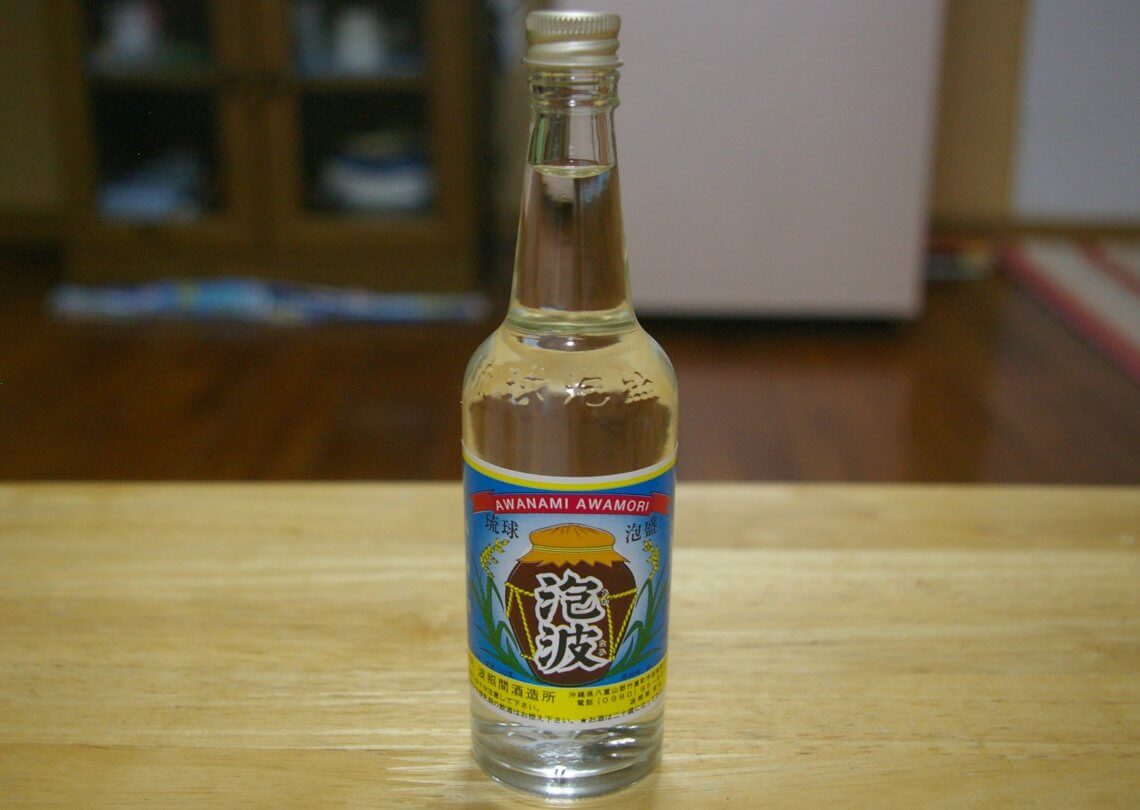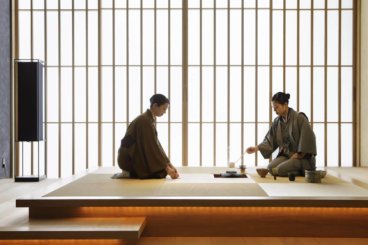It’s often said that Okinawan culture can be summed up by the word chanpuru (in the local language it means “something mixed”) and this is an apt description of Okinawa’s food.
Chanpuru is an etymologically interesting word, deriving from the Indo-Malay “campur,” being identical in both meaning and pronunciation. (Japanese pop culture enthusiasts may be familiar with the word via the anime cult classic Samurai Champloo, set during a joyously anachronistic hip-hop-influenced version of the Edo period.)
Before its annexation in the late 19th century, Okinawa was once an independent trading nation with connections to various parts of Southeast Asia, China, and Japan. Hailing as I do from Malaysia—itself a melting pot of various cultures, and the previous site of contention for various colonial powers—the vibrant hybrid nature of Okinawan cuisine resonates deeply with me.

The subtropical climate of the Ryukyu Islands, one of the best off-the-beaten-path destinations in Japan, already sets it apart from most of the Japanese mainland, and the basis of its cuisine begins with an entirely different shopping basket.
Many specifically local vegetables and seaweeds abound in Okinawan cuisine, and even tofu made locally is distinctively denser and creamier. Also, while Japanese cuisine is famous for its heavy reliance on fish, pork is at the heart and soul of Okinawan cuisine.
There’s much to explore and enjoy when it comes to Okinawan cuisine. Don’t visit and expect to eat “Japanese” food; instead, lounge on a beach and enjoy everything the islands have to offer.
Here are a few dishes you can try during your visit!
Goya Chanpuru
It makes sense that one of the defining dishes of Okinawan cuisine would be a chanpuru of some kind. Enter goya chanpuru, a stir-fry of bitter gourd slices, scrambled eggs, and pork. Sometimes, there’s tofu; it might even be made with canned tuna on occasion.
Unlike Chinese bitter gourds, which are a lighter green and gently bumpy, bitter gourds in Okinawa are of the Indian variety. They’re covered in ridges and teeth, and are most often a deep, verdant green. Sometimes, you might find white gourds. The bitterness is an acquired taste, but with age I find it extremely tasty. It doesn’t hurt, of course, that it’s a vitamin and mineral powerhouse.
Goya chanpuru lends itself remarkably well to variation. No two versions taste exactly the same. In my ideal version, the bitter gourd is thinly sliced, cooked just long enough to lose its rawness but still retain a light crunch. The earthy bitterness is softened by loosely set scrambled eggs, and thin, fatty pork belly slices, browned and curling at the edges.
I confess to being fond of the intense saltiness of Spam fingers in this dish—the exact opposite of rarefied food. Tofu is optional but not necessary in my book, since egg already provides the creaminess. To season, add salt, and a little dashi or fish sauce to bring out the umami.
Incidentally, other chanpuru dishes are also delicious. To name just a few, fu chanpuru (wheat gluten), mamina chanpuru (mung beans), tofu chanpuru, and somen chanpuru (wheat noodles). I love the latter. At its best, it is so much more than just stir-fried noodles, each angel hair-like strand slicked through with pure umami, the omnipresent pickled red ginger at its side.
Rafute
Where do I begin to wax lyrical about rafute? Imagine thick slabs of pork belly, equal parts tender meat and quivering fat the texture of room temperature butter (and just as heart-stopping), coated in a swoon-inducing sweet-savory glaze.
It’s made by braising pork belly slowly, gently—twice, in some cases—in a bath of soy sauce, kokuto (brown sugar), and awamori (distilled long grain rice liquor). Done right, each piece should just hold its shape until it doesn’t, collapsing right in the heat of your mouth. The skin in particular should be tender and gelatinous, not chewy. Those who love Chinese dong po rou or hong shao rou will know exactly what I mean.
In Okinawa, they trot out rafute on special occasions. You’ll also find thin slices on top of Okinawan soba, and it’s sometimes called sanmainiku (three-layer pork belly). Eaten in moderation, all the collagen and fat helps keep your skin looking smooth and young, or so the locals say. But if you’re the kind of person who slices every single piece of fat off your meat, avoid this dish. Rafute is not for those fastidious about their fat.
Jimami Tofu
Ordinary tofu is made from soybeans, but in Okinawa food, there’s a kind of tofu made from peanuts and potato starch. It’s called jimami tofu, and its most distinctive quality is its texture—a delicate stickiness that’s remarkably addictive. It’s often served with ginger or black sugar syrup as a dessert, but can also be eaten as with more conventional tofu styles, such as with soy sauce, a dab of wasabi, and grated ginger.
Those with peanut allergies will want to ensure that they’re not accidentally eating jimami tofu (read more about traveling in Japan with dietary requirements). The alternative in Okinawa is shima dofu, or “island tofu.” This is made from soybeans, but has less water (and more protein) than conventional tofu, and a much denser, crumblier texture too. You’ll find bags and packages of shima dofu at supermarkets made fresh daily—a treat not to be missed on any trip to Japan.

Taco Rice
The long-term U.S. military presence has left a lasting influence on Okinawa food. Spam, for instance, has found its way into various local dishes like goya chanpuru. Then there’s taco rice, reputedly created in the Shinkaichi district of Kin Town near one of the bases.
Not to be confused with tako as in octopus, the “taco” here refers to the Mexican specialty (and American favourite) — a wheat or corn shell filled with meat, tomatoes, and cheese — except that they’ve substituted the shells with rice.
It’s hard to go wrong with a rice bowl. Think sloppy, stewed minced meat, crunchy salad greens, tomatoes, mayonnaise—perhaps some hot sauce—on a bed of steaming rice. Don’t forget the cheese! A taco might be handheld, but there’s something so fundamentally right about digging in to your meal with a spoon.

Umi Budo
Japanese onomatopoeia can be remarkably accurate in its descriptions. Puchi puchi is a charming word referring to the sensation of a multitude of things popping, and it encapsulates perfectly the texture of umi budo. Known as “green caviar” or “sea grapes” in English, umi budo are a local, mineral-rich seaweed cultivated and harvested in the waters around the Okinawan islands. (You’ll also see them in the Philippines.)
These succulent strands have a pleasing snap to them, and are covered in tiny, salty bubbles that pop in your mouth. When dipped in ponzu (soy sauce and citrus juice), it’s sharp and tangy and utterly refreshing. Sometimes, you’ll even see umi budo as an ice cream in the summer! At the izakaya, wash these sea grapes down with an Orion beer or a glass of awamori.

Awamori
For beer drinkers, there’s little better on the island than a pint of Orion. But for those looking for a stronger, boozier liquor, awamori (also known as “island sake”) is the spirit to go for in Okinawa. Awamori is a long grain rice liquor, fermented with indigenous black koji mould and then distilled (like Japan’s other famous spirit, shochu).
Awamori exists in great part because of Okinawa’s trading past with Thailand several centuries ago—even today, it’s made with Thai rice, rather than locally grown rice.
Written with the characters “bubble” and “swell,” awamori isn’t actually fizzy, but the name is said to derive from the bubbles that rise during distillation.
Awamori is typically 50 proof (25 percent alcohol) or higher. To the uninitiated, it can be disconcertingly strong, especially if it hasn’t been aged very long. Aging awamori in traditional clay pots mellows out the harsh edges. Like Japanese whisky, the longer the aging process, the more mellow and rich the flavor, and the more prized the resulting tipple. This does make it dangerously easy to drink—more like a presence that makes itself felt the next morning, according to a friend. It’s most popularly drunk with water and ice, and in cocktails. Many locals also enjoy squeezing a few drops of shikuwasa juice into their awamori.
For culinary purposes, think of awamori as a local version of Japanese sake. You’ll see awamori table side, for instance, but infused with chili peppers. In this form, it’s a hot sauce known as koregusu, and it’s a well-loved condiment for Okinawa soba and other dishes. Down south, you’d use awamori instead of sake in the initial braising of pork belly to make rafute.
Shikuwasa
Japan has a surprising number of native citrus fruits, largely unknown outside of the country—or in some cases, even outside of certain prefectures. Yuzu, yes, but also kabosu, sudachi, daidai, ponkan, kinkan, and amanatsu—just to name a few!
Shikuwasa is a citrus endemic to Okinawa and Taiwan. It’s small and green, with an intense sourness. It tastes like a super tart hybrid of a lime and a tangerine. You’ll see it everywhere on the island—a slice to squeeze into your soy sauce, or into a glass of awamori and ice to brighten it up; perhaps as jam; and there are the ubiquitous cans of sweetened shikuwasa juice in vending machines and supermarkets.
Mozuku
Mozuku is divisive. Even more so than umi budo, it is an acquired taste. I personally love these slippery, slimy tangles of dark brown strands of seaweed, but they’re not for everyone. It does, however, contain a ton of minerals that purportedly strengthen your immune system, which might be a factor in that famous Okinawan longevity.
A local speciality is mozuku tempura. Then again, most things are more palatable deep-fried! Or, if you enjoy varied textures as much as I do, try slurping mozuku marinated in vinegar and a little soy sauce. You might see it as an appetizer in izakayas, or in small plastic containers at the supermarket.

Okinawa Soba
Okinawa soba is the island’s answer to ramen on the Japanese mainland—a soup noodle dish topped with stewed pork, scallions, and fish cake. Though soba commonly refers to buckwheat noodles, these thick, curly noodles are made of wheat and egg. “Soba” is just a way to refer to the dish. For me, much hinges on the quality of the noodles, as wheat noodles can be a little stodgy. For most Okinawans, this is well-loved comfort food.
What I love best about this dish is the surf ‘n’ turf broth. It’s made by simmering pork bones and meat along with kelp and skipjack bonito, marrying the best of Okinawan and Japanese cuisines in one soup. It’s light and clear, but has a distinct body and weight from the pork.
Pickled red ginger makes the broth wonderfully piquant, and a few drops of a local condiment called koregusu—awamori infused with chili peppers—adds a delightful kick. The stewed pork topping is typically sanmainiku (three-layer pork belly), but soki (bone-in ribs), nankotsu soki (ribs with cartilage), and tebichi (pig’s trotters) are also popular options.
Mimiga
Every part of the pig is eaten except its oink—or so they say in Okinawa. (Pragmatic, and to my mind, very Chinese.) Mimiga is just one example of this.
Consisting of thinly sliced pig’s ears boiled or steamed, it’s usually tossed in vinegar, and served with mayonnaise or a salt, peanut, or sesame dressing. Mimiga is crunchy and lightly gelatinous, definitely for diners who appreciate more interesting textures in their food. It’s an addictive appetizer or beer snack.


